Hello and welcome to another blog post about oak trees and acorns!
Not only did I learn this year that our oak trees drop acorns, but I was lucky enough to be up on the homestead when one of our oak trees decided to drop a large amount of acorns. I had intended to only collect a few,

but I got really excited and things got a little out of control…
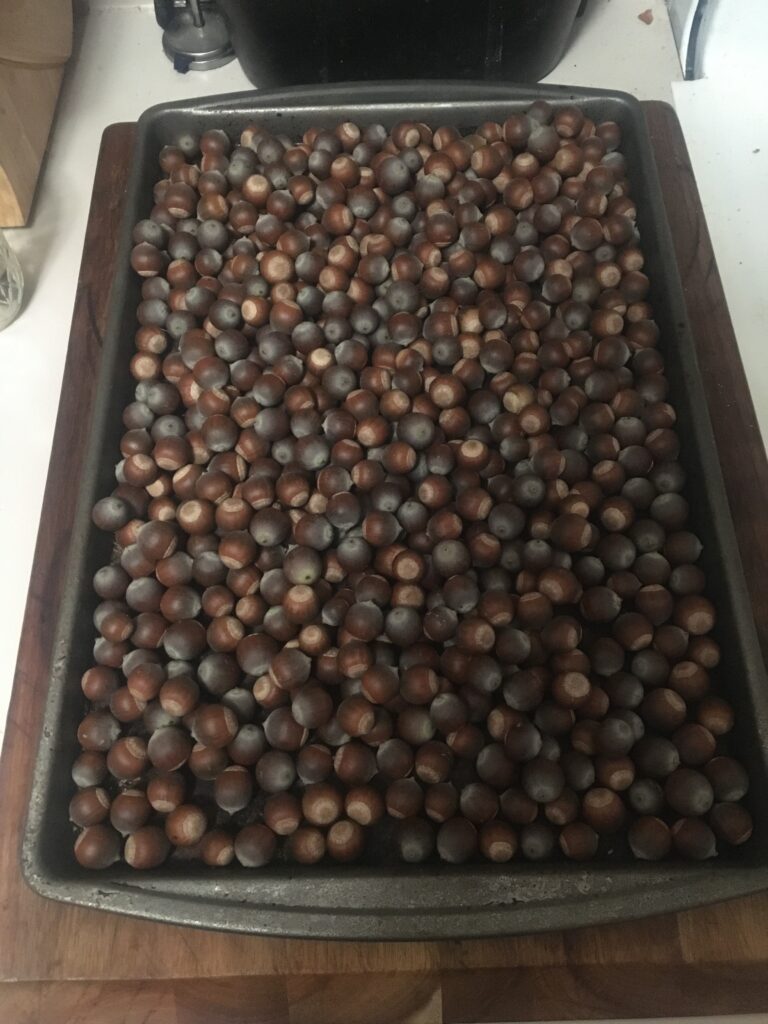
As someone who plans to live off the land as much as possible, using these acorns for food in the future would be amazing! However, most acorns are not edible right off the tree. The acorns contain tannins which when consumed in large quantities can be toxic and very dangerous for your health. Freaking tannins 😁 Since we currently do not have space for me to try and grow these all into trees, I decided it would be a good idea to practice removing these tannins to make the acorns edible.
There are a couple of ways to remove the tannins, and the two that I will be playing around with both involve leaching the tannins using water. Per usual I read a couple of different views on how exactly to go about this. The first method to extract the tannins involves removing the acorns from their shells and boiling them in water. For this method, you use two containers of hot water. In one container you would be boiling the acorns while you heat the water in the second container to a temperature close to boiling. When you have removed some of the tannins you switch the acorns to the clean water and get that up to a boil. You then dump out the water with the extracted tannins and replace it with fresh cold water. Then you have to work quickly to get clean water back up to a near boiling temperature to do it all over again. The idea is that you don’t let the acorns cool down when switching between pots of water. Does this actually matter? I have no idea, but either way it was a lot of work to keep this up so I was not a huge fan of this method haha.
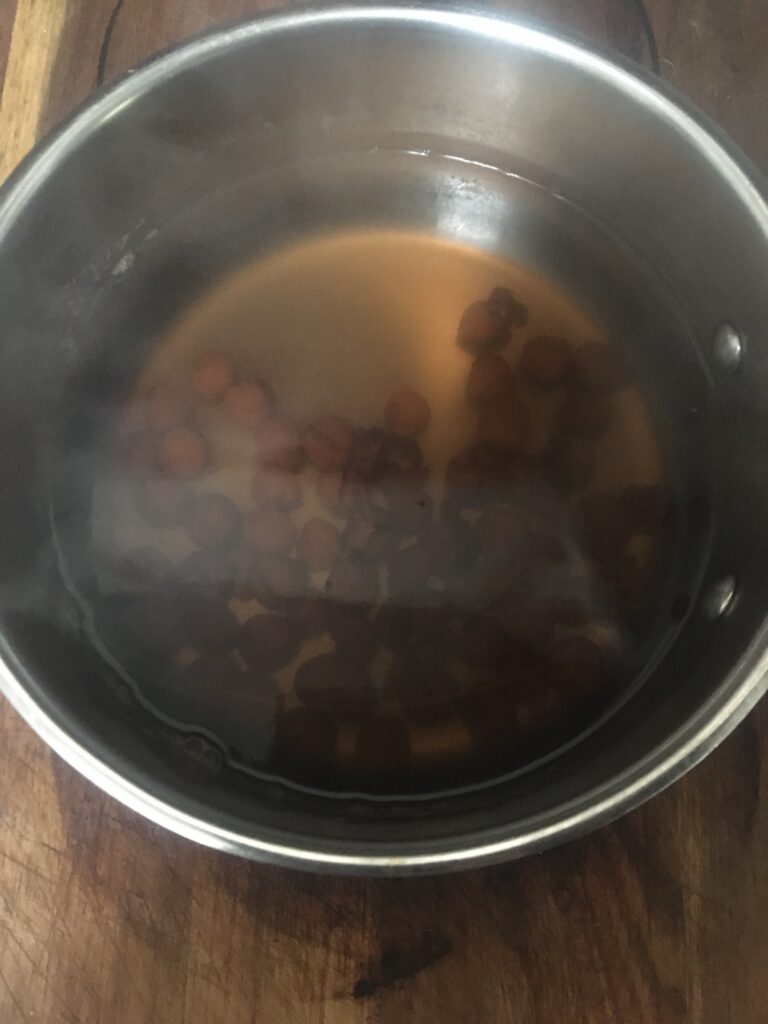
The other issue with this method is that the acorns begin to change color when you cook them. In the above picture you can see that the acorns were turning brown which is what they are supposed to do when you roast them. I couldn’t tell if the water was turning brown from the tannins or if I was cooking the acorns! 🤔 To make matters worse, I haven’t actually tasted a cooked acorn before, so I have no idea what it is supposed to taste like when all the tannins have been removed.
The second leaching method is completed in cold water in the refrigerator. This method takes days to remove the tannins compared to minutes/hours with the hot water method, but the hands-on time is significantly lower. If you know me well then you know that this is right up my alley! 😊 Within this method I tried two subsets. The first was leaving the acorns whole so that you can roast them after as a more normal tree nut snack.
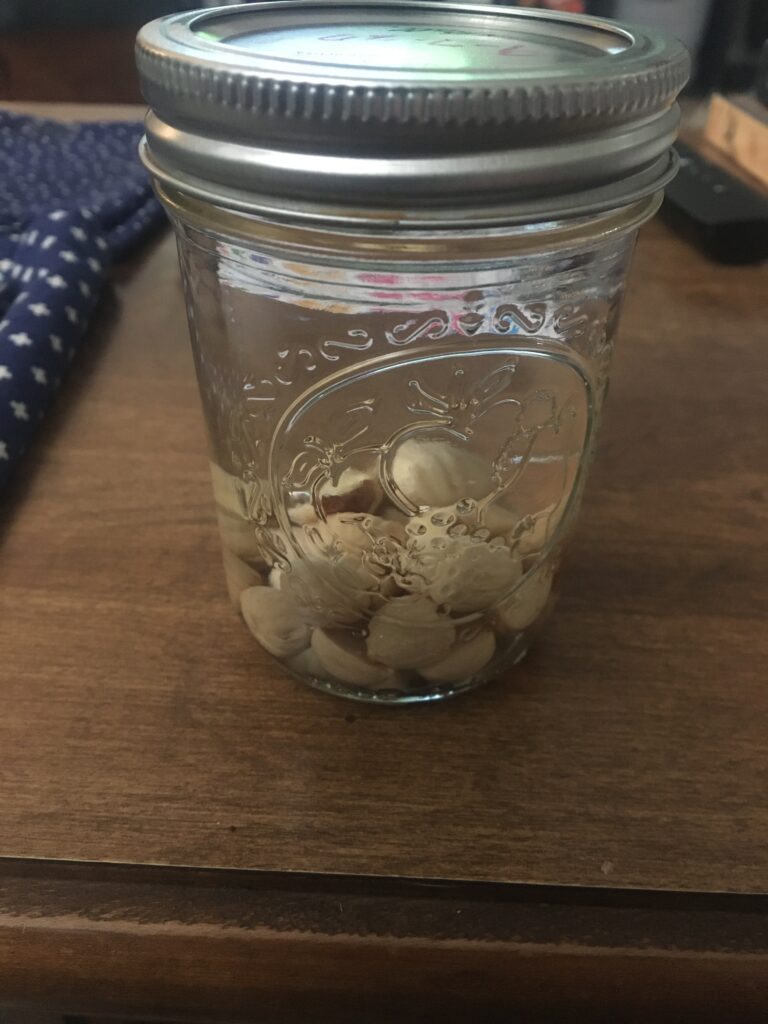
The thought is that as the tannins are leached into the water they then turn it brown. Each day you check the water and pour it off if it has turned brown. When it no longer changes color, then you have removed all the tannins. I unfortunately did not find much success with this method. After a couple of days the water never changed color. I still tried replacing the water every few days, but never saw a color change. After multiple weeks of no change in the water color I decided to give up on this method. I was expecting this to be slow, but to have no progress at all was quite surprising. Although I am done with this method for now, I will probably revisit this when we are living on the homestead with access to more acorns.
The second cold water method I tried had me grind the acorns down a bit before leaching out the tannins. Grinding them down in a blender with water will get you something that looks like this
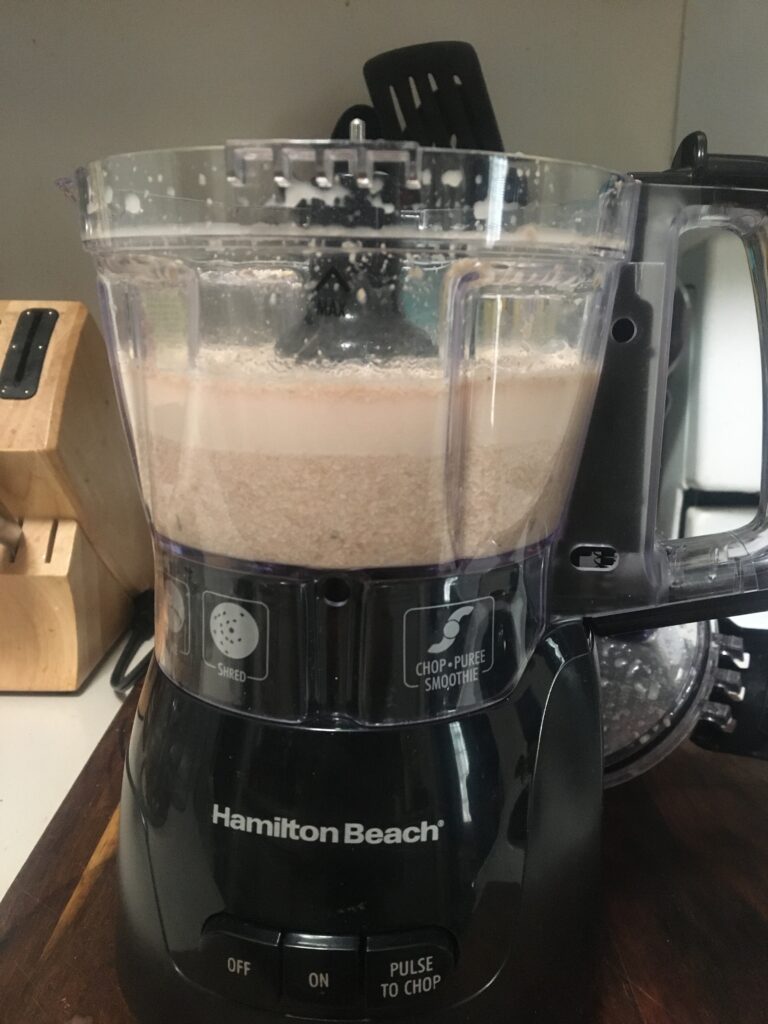
By grinding them down we have increased the surface area that the water can easily contact. This makes sense that it would work better than the whole acorns, and I did see much more success with this!
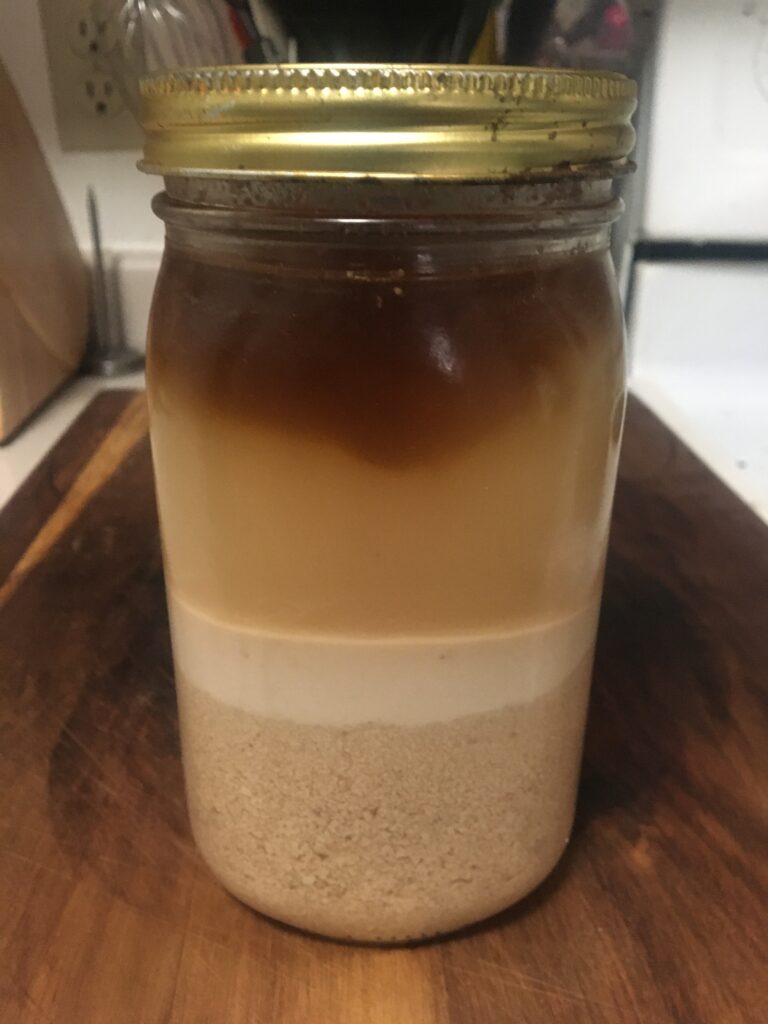
Just like with the whole acorns, you pour off the water each day and replace it with clean water. Back in the refrigerator it goes, and then you keep doing this until the water starts to clear up. The time needed to remove the tannins varies for different types of oak trees, and I am fairly certain the trees we have are bur oaks. It was supposed to only take three to five days to leach the tannins. Here is the jar after five days and it looks like there are still some tannins leaching out…
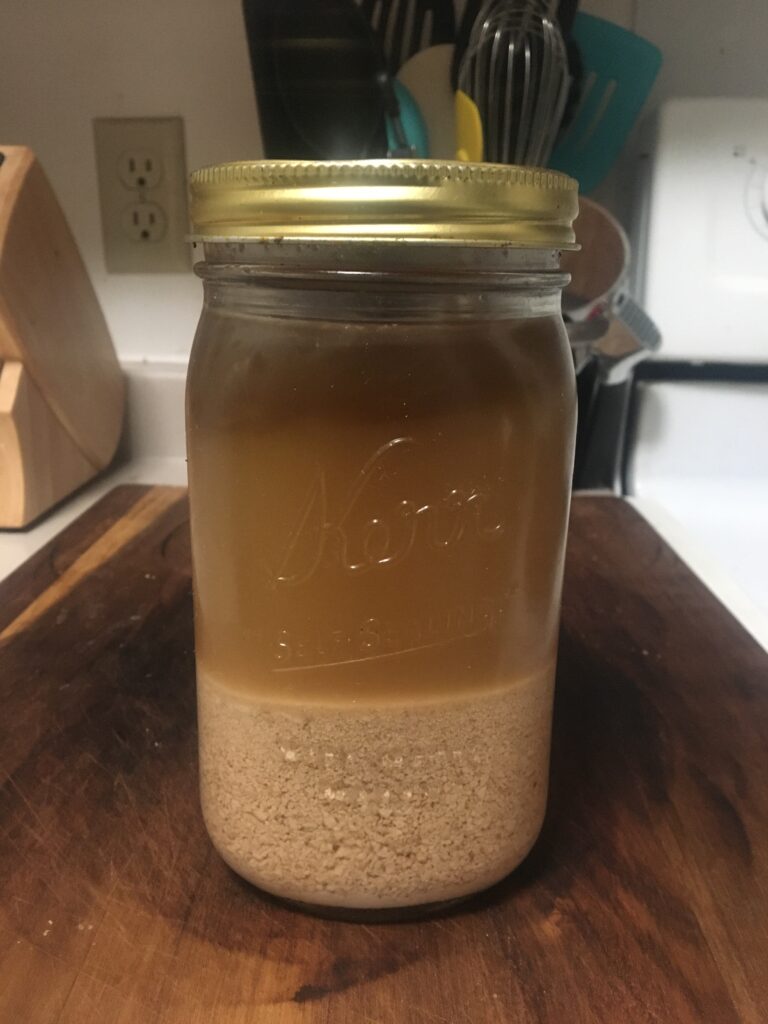
I found that it actually took a couple of weeks to fully leach the tannins.
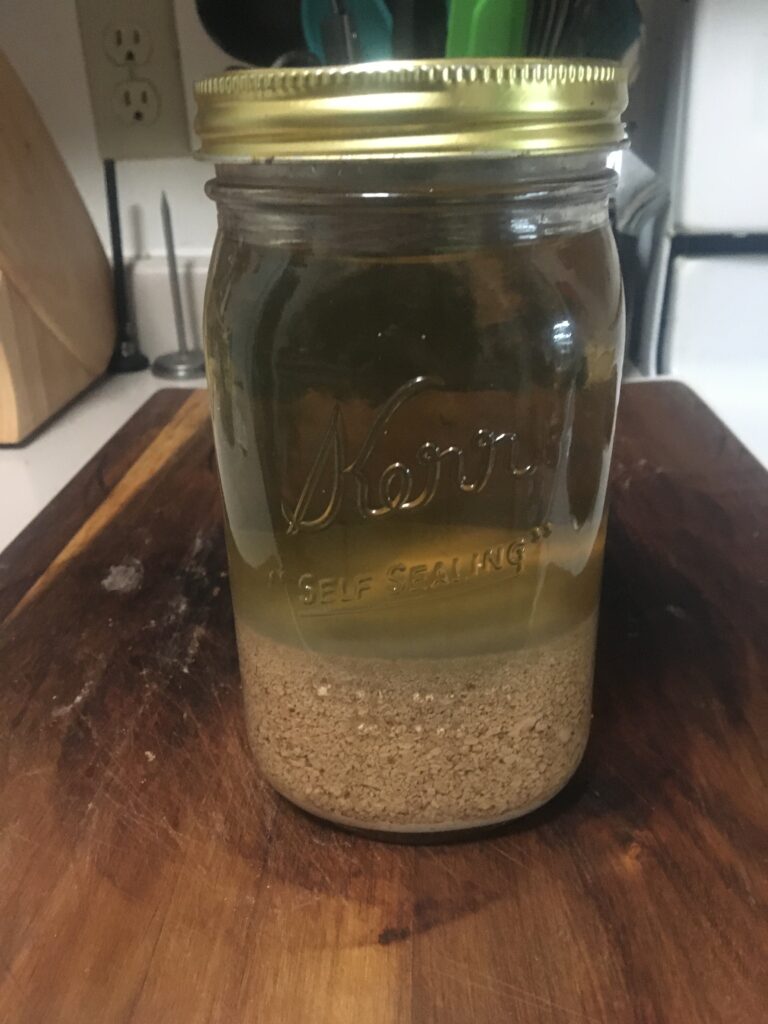
The extra time needed to leach the tannins not only delayed when I could process them, but also will cut this post short. I’ve wanted to get this post out for a while, and I don’t want to delay it any longer. It takes me a while to summarize my activities in a post, so the back half of this adventure will definitely take a couple weeks to get out to you 😁 Enjoy this post for now, and know that I will be back soon with a post on what to do with your tannin-less acorns!
